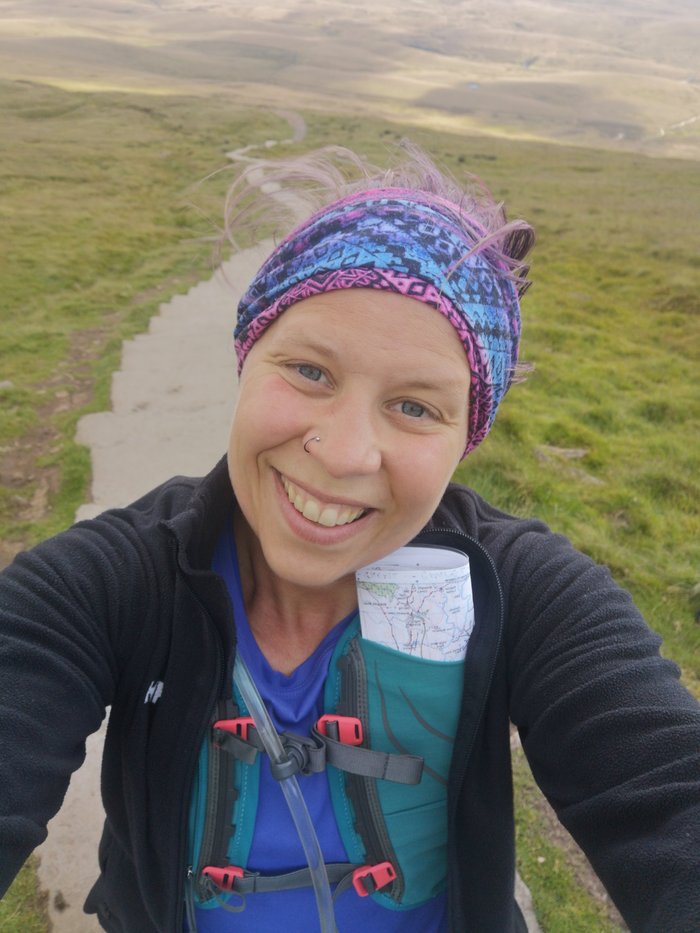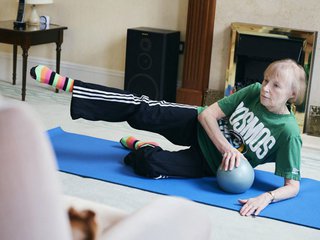My tips for long hospital stays
Emma was diagnosed with myelodysplastic syndrome (MDS) in 2011. She’s had several stays in hospital for treatment including chemotherapy and two stem cell transplants. She shares her tips for staying active and positive in hospital.

I was diagnosed with MDS, a type of blood cancer, in 2011. But my experience of tests, treatment and hospitals started in 2005 at the age of 17 when I was diagnosed with aplastic anaemia. It’s a blood disorder where your immune system attacks your bone marrow and stops it making blood cells.
I’ve needed to have lots of treatment over the years for the aplastic anaemia and MDS, including blood transfusions, immunosuppressive therapy, chemotherapy and two stem cell transplants. All this has meant I’ve spent a lot of time in hospital. I’ve built up a list of things that help me during treatment.
Keeping active
It’s always been really important to me to stay as active as I can when I’m in hospital. If I was at home feeling a bit grotty and tired I’d still move around and do things. But when you’re shut in a room in hospital you end up being really limited in movement. I think if you just lay in bed all the time, it can make you feel more ill. So I used to take things in with me to help me do gentle exercise in my room, like a yoga mat and resistance bands.
I’d take so much stuff into hospital with me, I think the nurses thought I was absolutely bonkers, bringing a yoga mat with me while having chemotherapy! But it was really important to me to keep moving as long as I felt well enough.
“My advice to anyone having treatment in hospital is to keep moving when you can. If you feel up to it, keep active because you need to keep that strength up for the days when you’re not well enough.”
As well as exercising in my room, I got permission from my hospital team to go outside for walks during some of my hospital stays. It wasn’t standard protocol and might not be possible for everyone, but my consultant said it was fine if I felt well enough.

Keeping active
Being more active can improve your mood as well as your physical well-being. Find out how to get started.
Taking my own food
Another thing that was important to me was taking in my own bits and pieces of food to snack on, so I didn’t always have to eat the hospital food. I’m mostly vegetarian, and I found the hospital food options got boring quite quickly. Some hospital wards have fridges where patients can store their own food, so it’s worth checking with your hospital team before you go in.
Entertainment
I’d also take in lots of little projects to keep me occupied, like knitting, crochet, puzzles and simple games like battleships. It might sound silly if you don’t usually play games or do puzzles in your everyday life, but I found they made a big difference.
I used to hate having visitors sometimes because I was tired and didn’t want to make conversation. It was nice to have something to do together, like doing a puzzle or a game. It made me feel connected to them without having to talk much.
I took in a laptop to watch films. But if I had a headache I often didn’t feel like having anything visual, so I also had audiobooks and a digital radio so I could just close my eyes and listen.
“I always take stuff to do, even if it’s just an outpatient appointment, because I know I’m going to be there a long time.”
Making myself at home and feeling like "me"
I used to take in my own duvet if I knew I was going to be in for a long time. It was just a really thin one so it wasn’t too warm, and I’d use the hospital sheet underneath so it stayed clean.
I always took in several sets of pyjamas, because I liked to get dressed in the morning but wanted something comfortable. I’d have my ‘night’ pyjamas and my nice ‘day’ pyjamas so I felt dressed for the day but comfortable. Or I’d put on joggers and something easy to get on and off over my drip like a zip-up hoody.
I found taking in nail varnish to do my nails also gave me something to do and made me feel more like myself.
My packing list for hospital:
- Food to snack on when I didn’t want hospital food. Some hospital wards have a fridge where patients can store their own food so it’s worth checking this before you go in.
- A yoga mat and resistance bands so I could do some gentle exercise when I felt up to it
- Little projects to do, like knitting and crochet
- Puzzles, a pack of cards and simple games like battleships
- Headphones to zone out from the hospital noises around me
- A laptop with films downloaded onto it, as the Wi-Fi often isn’t great in hospital
- Audiobooks, as I found it hard to concentrate on reading
- A digital radio. When I had a headache I didn’t want visual stuff, so I would just lay there and listen to the radio
- My own duvet – a really thin one so I wouldn’t get too warm
- Nail varnish, so I could spend time doing my nails
- Comfy clothes that were easy to get on and off over a drip, like zip-up hoodies
